A general officer is an officer of high rank in the armies, and in some nations' air forces, space forces, and marines or naval infantry.

Military ranks are a system of hierarchical relationships, within armed forces, police, intelligence agencies or other institutions organized along military lines. The military rank system defines dominance, authority, and responsibility in a military hierarchy. It incorporates the principles of exercising power and authority into the military chain of command—the succession of commanders superior to subordinates through which command is exercised. The military chain of command constructs an important component for organized collective action.

The Indian Army is the land-based branch and largest component of the Indian Armed Forces. The President of India is the Supreme Commander of the Indian Army, and its professional head is the Chief of Army Staff (COAS). The Indian Army was established on 1 April 1895 alongside the long established presidency armies of the East India Company, which too were absorbed into it in 1903. Some princely states maintained their own armies which formed the Imperial Service Troops which, along with the Indian Army formed the land component of the Armed Forces of the Crown of India, responsible for the defence of the Indian Empire. The Imperial Service Troops were merged into the Indian Army after independence. The units and regiments of the Indian Army have diverse histories and have participated in several battles and campaigns around the world, earning many battle and theatre honours before and after Independence.
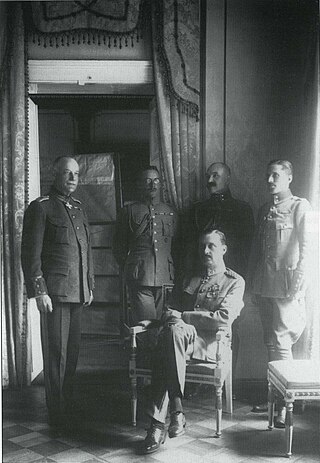
Adjutant is a military appointment given to an officer who assists the commanding officer with unit administration, mostly the management of human resources in an army unit. The term adjudant is used in French-speaking armed forces as a non-commissioned officer rank similar to a staff sergeant or warrant officer but is not equivalent to the role or appointment of an adjutant.
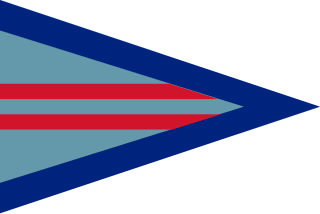
Wing commander is a senior commissioned rank in the British Royal Air Force and air forces of many countries which have historical British influence, including many Commonwealth countries but not including Canada and South Africa. It is sometimes used as the English translation of an equivalent rank in countries which have a non-English air force-specific rank structure. It ranks immediately above squadron leader and immediately below group captain.

The Indian Army during British rule, also referred to as the British Indian Army, was the main military force of the British Indian Empire until 1947. It was responsible for the defence of both British India and the princely states, which could also have their own armies. As quoted in the Imperial Gazetteer of India, "The British Government has undertaken to protect the dominions of the Native princes from invasion and even from rebellion within: its army is organized for the defence not merely of British India, but of all possessions under the suzerainty of the King-Emperor." The Indian Army was an important part of the forces of the British Empire, in India and abroad, particularly during the First World War and the Second World War.

Lieutenant General Amir Abdullah Khan Niazi was a Pakistan Army officer. During the Bangladesh Liberation War and the Indo-Pakistani War of 1971, he commanded the Pakistani Eastern Command in East Pakistan, he signed the instrument of surrender as in 16 Dec. '71 his forces had to surrender to the Indian Army's Eastern Command's commander Lieutenant General Jagjit Singh Aurora by the order of the then President of Pakistan Yahya Khan.

Field Marshal Sam Hormusji Framji Jamshedji Manekshaw, also known as Sam Bahadur, was the Chief of the Army Staff of the Indian Army during the Indo-Pakistani War of 1971, and the first Indian Army officer to be promoted to the rank of field marshal. His active military career spanned four decades and five wars, beginning with service in World War II.

The Pakistan Army, commonly known as the Pak Army is the land service branch and the largest component of the Pakistan Armed Forces. The president of Pakistan is the supreme commander of the army. The Chief of Army Staff (COAS), a four-star general commands the army. The Army was established in August 1947 after Pakistan gained independence from the United Kingdom. According to statistics provided by the International Institute for Strategic Studies (IISS) in 2023, the Pakistan Army has approximately 560,000 active duty personnel, supported by the Pakistan Army Reserve, the National Guard and the Civil Armed Forces. Pakistani citizens can enlist for voluntary military service upon reaching 16 years of age, but cannot be deployed for combat until the age of 18 in accordance with the Constitution of Pakistan.
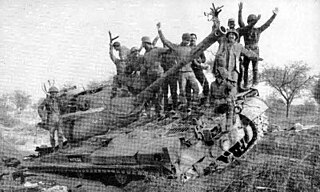
The Battle of Basantar also known as the Battle of Shakargarh or Battle of Barapind was one of the vital battles fought as part of the Indo-Pakistani War of 1971 in the western sector of India. The Indian troops won a hard-fought battle that secured this area in the Punjab/Jammu sector. The name Battle of Basantar actually encompasses the entire gamut of battles and skirmishes fought in the Shakargarh sector.

The Battle of Chawinda was a major engagement between Pakistan and India in the Second Kashmir War as part of the Sialkot campaign. It is well known as being one of the largest tank battles in history since the Battle of Kursk, which was fought between the Soviet Union and Nazi Germany in World War II.
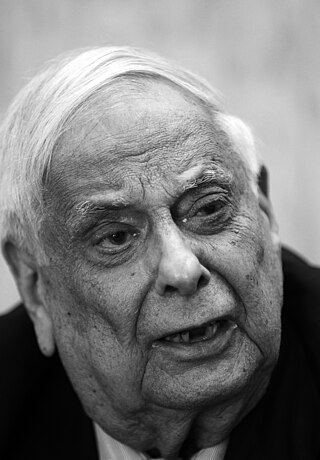
Lieutenant General Jack Farj RafaelJacob was a general officer in the Indian Army. He was best known for the role he played in the Bangladesh Liberation War of 1971. Jacob, then a major general, served as the chief of staff of the Indian Army's Eastern Command. During his 36-year long career in the army, Jacob fought in World War II and the Indo-Pakistani War of 1965. He later served as the governor of the Indian states of Goa and Punjab.
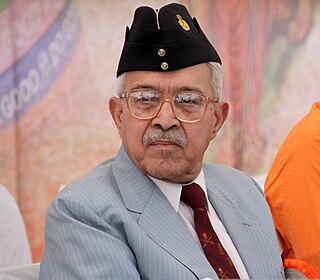
Lieutenant General Mohammad Ahmed Zaki is a former general officer of the Indian Army.
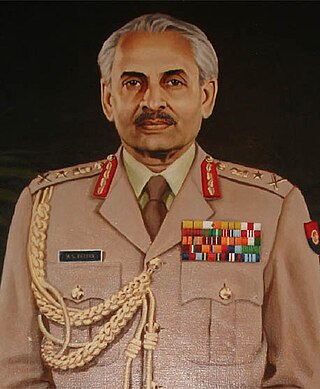
General Arunkumar Shridhar VaidyaPVSM, MVC & Bar, AVSM, ADC was a General Officer in the Indian Army. He served as the 13th Chief of the Army Staff from 1983 to 1986. Following his retirement, he was assassinated by Harjinder Singh Jinda and Sukhdev Singh Sukha in August 1986. This was done in vengeance of Operation Blue Star which Vaidya commanded.
Abdul Ali Malik was a three-star rank army general in the Pakistan Army and an infantry officer in the Pakistan Army from Nineteenth Battalion of Punjab Regiment who earned distinction of leading the combat infantry formations to mechanized warfare in Chawinda during the second war with India in 1965, and later commanded the I Corps during the third war with India in 1971.

Lieutenant General Sagat Singh, PVSM was a General Officer in the Indian Army notable for his participation in liberation of Goa and later in Indo-Pakistani war of 1971. He held many commands and staff appointments throughout his career.

The 16th Light Cavalry is a regiment of the Armoured Corps, a primary combat arm of the Indian Army. Prior to India gaining independence from the British in 1947, it was a regular cavalry regiment of the British Indian Army. It was formed in 1776 and is the oldest armoured regiment raised in India. The 16th Light Cavalry saw service in a number of conflicts ranging from the Second Anglo-Mysore War in 1781 to World War II. It has a number of battle honours including "Punjab 1965" earned during the Indo-Pakistani War of 1965.
The 111th Independent Infantry Brigade Group, commonly known as the 111th Brigade or Triple-1 Brigade, is an infantry brigade of the Pakistan Army notable for its frequent involvement and fast response in military coup d'etats since Pakistani independence. From 11 January 2012 Brigadier Sarfraz Ali commanded the Brigade. He succeeded Brigadier Faheem Rao who had earlier replaced Brigadier Asim Salim Bajwa.
Lieutenant-General Naseem Rana was a retired three-star general in the Pakistan Army, who served as the director-general of the Inter-Services Intelligence (ISI) from 1995 to October 1998. Rana belongs to Rajpoot Family of Faisalabad region of the Punjab Province.[2]
Lieutenant General Naveen Chand Rawlley, PVSM, AVSM, MC was a General Officer in the Indian Army. He served as the General Officer Commanding-in-Chief Eastern Command before taking over as the 5th Vice Chief of the Army Staff.














